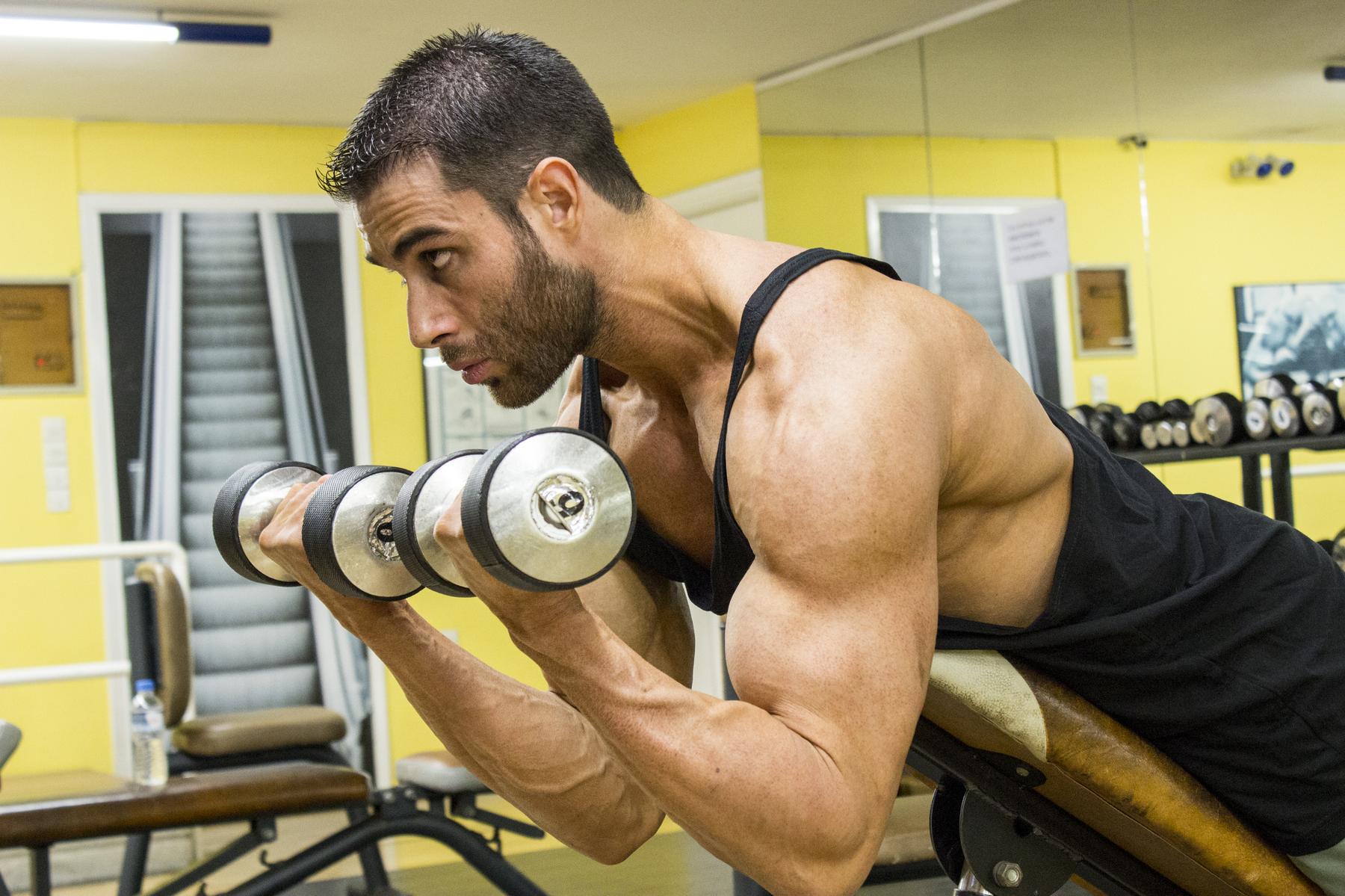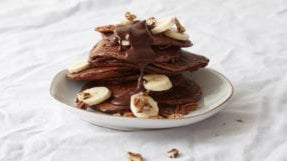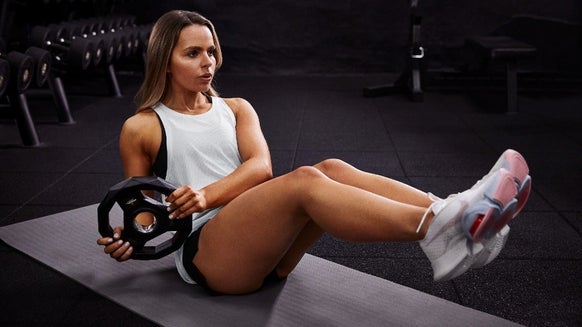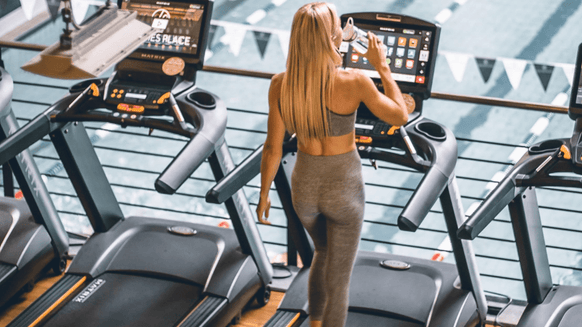 The spider curl is one of the most effective exercises for those looking to efficiently trigger and stimulate the working bicep muscle during a workout. Fortunately, it’s fairly practical, as it can be performed in almost any gym or home workout setting. All you’ll need is a bench, a barbell or set of dumbbells, and the correct form and technique. Below is the correct way to perform the spider curl, followed by some common mistakes.
The spider curl is one of the most effective exercises for those looking to efficiently trigger and stimulate the working bicep muscle during a workout. Fortunately, it’s fairly practical, as it can be performed in almost any gym or home workout setting. All you’ll need is a bench, a barbell or set of dumbbells, and the correct form and technique. Below is the correct way to perform the spider curl, followed by some common mistakes.How to do the spider curl
Preparation
- To begin this exercise; position the bench in an inclined degree, similar to if you were performing an incline bench press movement. It’s also useful to place the barbell you’ll be using just in front of the bench.
- Place yourself on top of the bench with your stomach and front torso pressing against it. As you grip the barbell in front, ensure that both of your feet are firmly positioned against the floor. This ensures that your body is stable and has a firm base.
- While on the bench, engage your core and glute muscles for a rigid frame.
- Pin your shoulders back and engage the lats. This protects your shoulders and encourages good posture.
- Just like any other regular bicep curling motion, you should be gripping the barbell in a supinated position (with your palms facing upwards).
Technique
- As you exhale, lift the barbell upwards as much as possible. Once you’ve contracted as far as possible, squeeze the working bicep muscle and hold for a brief period.
- As with other bicep movements, try not to allow your elbows to flare outwards during the movement.
- Slowly release the barbell down towards the ground, back to starting position.
- Briefly pause before repeating the movement for the designated number of repetitions.
- Keep your spine and neck neutral to avoid straining and keep the focus on the Biceps.
Common mistakes and how to fix them
Lack of contractions:
Often, due to excessive momentum and too much weight being applied, the contraction of the spider curl can be neglected. Whilst it’s important to progressively overload the weight throughout our training, it’s far more essential to be able to also create sufficient stimulus on the muscle. In order to achieve this, perhaps lower the weight and focus on a correct tempo - slow eccentric and powerful eccentric with a brief pause and squeeze at the top of the contraction.
Range of motion: As your body isn’t physically in the way during a spider curl, a full range of motion is possible, since the weight has to be fully lowered, almost to the ground. This should be capitalised on and taken advantage of. If you neglect this full range of motion, you’ll only receive half the benefits, with less of a contraction, less stimulation and a less efficient movement. To prevent this, focus on fully lowering the weight and stretching it downwards before curling back upwards.
A handy alternative is to have a training partner with you to positively critique your form throughout the movement.
Momentum:
Avoid using momentum to fuel the lift. Keep the focus on the Biceps and the movement slow and controlled.What are the benefits of the spider curl?
Bicep curls target the long- and short head
Performing exercises from different angle points have been a renowned way of changing up your training program, preventing boredom, and targeting different areas of a particular muscle. Within the bicep muscle there are two heads to be targeted; the short head and the long head.They increase range of movement
Due to the unusual positioning of the barbell spider curl, the exercise allows a larger range of motion from start to finish, in comparison to the preacher curl for example. A larger range of motion allows higher efficiency of movement, injury prevention, and greater likelihood of strength and size gain.Time under tension
Spider curls have proven extremely favourable and advantageous over other bicep exercises due to the amount of tension that can be applied throughout. Applying an emphasised eccentric will only enhance this tension. Muscular tension leads to muscle stress, this stress will lead to muscular adaptation; whatever the goal may be.
Variations
In order to prevent your body from becoming complacent with your training; it is important to add variety to your program. With arm training it is very standardised to do the usual curl, pushdown, curl, and pushdown. But when did you last change the equipment you’re using? The Angle you are training from? The amount of sets/reps/tempo/rest time being applied? The spider curl alternatively can be varied in the sense you can perform it using a barbell, EZ bar, cable curl or unilaterally using dumbbells.Because of the unorthodox positioning of the spider curl, we can fall off balance and lose stability if our feet are not firmly based on the floor. To prevent this from occurring, before lowering yourself onto the bench completely, firmly place your feet (toes in particular) into the ground and ensure they are comfortable enough to not slip during the exercise.Standing Alternating Dumbbell Curls:
This can be done both seated or standing and can be equally as effective. It is important here to ensure the body is engaged, core/glutes etc, in order to gain full benefit. The movement needs to be controlled so don’t be throwing the weights about. This is how we get injured.Stand with your feet shoulder-width apart and a slight bend in your knees, holding a dumbbell in each hand by your thighs, palms facing away from you. Ensure your core is engaged along with your glutes to maintain posture and technique. Keep your elbows tight to your sides throughout, your chest and head up, and back straight. Maintaining this posture will ensure you’re using your biceps and only your biceps to curl the weights.Bend at the elbows to initiate the lift, slowly bringing the dumbbells to your shoulders over a count of three seconds. Give your biceps a slight squeeze at the top. Lower slowly under control, and squeeze your triceps slightly once you get to the bottom to ensure you’ve gone through a full range of movement.Seated Concentration Curl:
An old school favorite. By resting your elbow against the inside of your knee, it allows for more isolation of the muscle and less focus on the deltoid during the movement. This variation has been shown to bring the short head of the bicep into focus more than any other.Sit on a bench that’s set at a height so your knees are bent at 90° with your feet flat on the floor. Pick up a dumbbell and place the back of your upper right arm on the inner part of your right thigh. Your arm should be extended holding the weight off the floor.Slowly curl the weight up, only moving your forearms – the position of your upper arm on your thigh will help you keep it still during the exercise. At the top of the move, pause for a second and squeeze your biceps, then slowly lower the weight back to the start. Repeat on one arm before switching.Incline Dumbbell Curl:
Likely to be the closest movement that allows as much range of movement as the Spider Curl. Ensure your whole body is engaged for good form and, like the standing curl, don’t be throwing the weight about. Keep the movement steady and controlled. Chris is a Level 3 personal trainer with a BA Honours degree in Sports Coaching and Development and a Level 3 qualification in Sports Nutrition. With 15 years of experience in the fitness industry, he creates tailored fitness programmes and classes for a wide range of clients, from beginners to advanced athletes. Chris is also a qualified football coach, providing high-level goalkeeping and fitness training at semi-professional level. He spends his free time with his family or training in the gym.









